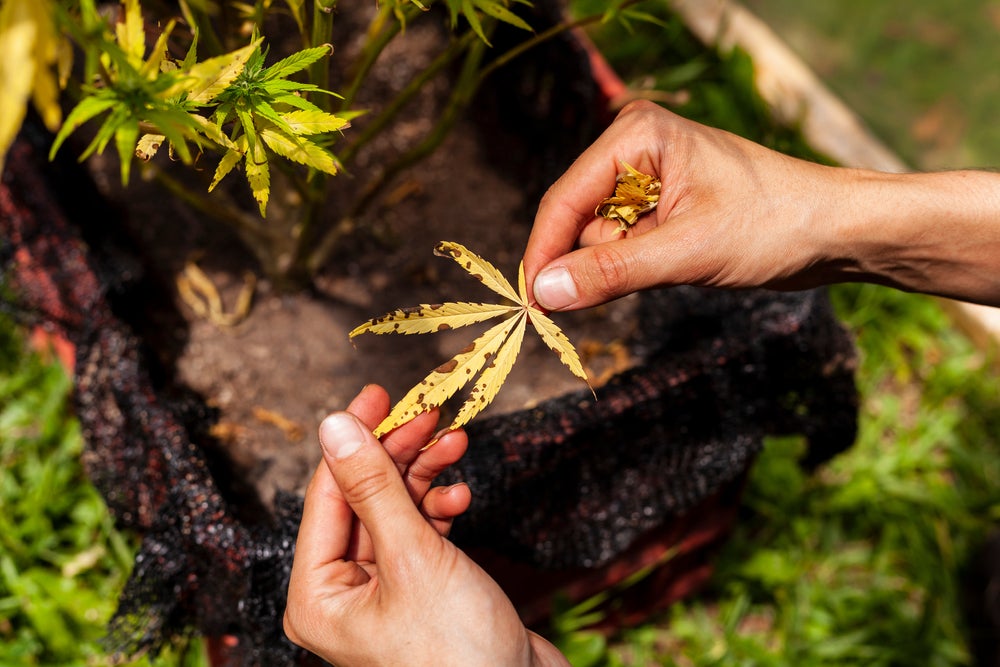Embarking on the journey of growing cannabis clones can be both rewarding and challenging. While nurturing your plants from clones can accelerate the growth process, it also opens the door to potential diseases and pests that can hinder your cultivation efforts. In this guide, we will explore proactive measures to prevent diseases and pests when growing cannabis clones, ensuring a healthy and thriving crop.
Start with Healthy Clones
The foundation of a successful and disease-resistant cannabis grow begins with healthy clones. When obtaining clones, choose reputable sources that prioritize cleanliness and follow best practices for plant health. Inspect the clones for any signs of pests, diseases, or stress. Healthy clones not only establish a strong foundation for your grow but also reduce the risk of introducing problems into your cultivation space.
Maintain a Clean Environment
Preventing diseases and pests in your cannabis clones starts with maintaining a clean and sterile environment. Regularly clean and disinfect your grow space, including tools, containers, and surfaces. Remove any debris, dead plant material, or fallen leaves that can harbor pests or provide a breeding ground for diseases. A clean environment minimizes the chances of pathogens taking hold and spreading through your crop.
Implement Proper Ventilation and Air Circulation
Good airflow is crucial for preventing the buildup of humidity, which can create conditions favorable for diseases such as powdery mildew and mold. Install proper ventilation systems to ensure a consistent exchange of air. This not only helps regulate temperature and humidity but also reduces the risk of stagnant air pockets where pests and diseases can thrive. Adequate air circulation also strengthens plant stems and discourages the development of fungal issues.
Optimize Light and Temperature Conditions
Maintaining optimal light and temperature conditions is not only essential for the growth of your cannabis clones but also plays a role in disease prevention. Ensure that your clones receive the appropriate amount of light for their stage of growth, and avoid placing them too close together, as overcrowding can create a haven for diseases to spread. Additionally, maintain consistent temperatures within the recommended range for your cannabis strain to discourage the development of stress-related issues.
Practice Proper Watering Techniques
Overwatering and poor watering practices can contribute to the development of root rot and other waterborne diseases. Provide your cannabis clones with an appropriate amount of water, allowing the soil to dry out slightly between watering sessions. Use well-draining soil and containers with drainage holes to prevent waterlogged conditions. Furthermore, avoid splashing water onto the leaves, as wet foliage can attract pests and create an environment conducive to fungal growth.
Monitor and Control Humidity Levels
Humidity control is a critical aspect of disease prevention in cannabis cultivation. High humidity levels can lead to the proliferation of mold and mildew, while excessively low humidity can stress the plants and make them more susceptible to pests. Invest in a hygrometer to monitor humidity levels and use dehumidifiers or humidifiers to maintain an optimal range, typically between 40-60%, depending on the stage of growth.
Implement Integrated Pest Management (IPM) Strategies
A proactive Integrated Pest Management (IPM) approach is essential for preventing and controlling pests in your cannabis clone grow. Regularly inspect your plants for signs of pests, such as discolored leaves, holes, or webbing. Introduce beneficial insects like ladybugs or predatory mites to naturally control pest populations. If necessary, use organic pesticides as a targeted and environmentally friendly solution.
Quarantine and Isolate New Additions
Whether it’s new clones, equipment, or tools, it’s crucial to quarantine and isolate any new additions to your grow space. This precautionary measure helps prevent the introduction of potential diseases and pests. Keep new plants in a separate area for observation before integrating them into your main cultivation space. This step is particularly important when obtaining clones from different sources to avoid cross-contamination.
Regularly Inspect and Scout for Issues
Consistent monitoring and inspection are key components of a successful disease and pest prevention strategy. Set aside time regularly to thoroughly inspect your cannabis clones for any abnormalities. Look for signs of discoloration, unusual growth patterns, or the presence of pests. Early detection allows for prompt intervention, reducing the impact of potential issues on your crop.
Choose Resilient Cannabis Strains
When selecting cannabis strains for cloning, consider varieties known for their resilience to common diseases and pests. Certain strains have natural defenses or characteristics that make them less susceptible to specific issues. Research the genetics of your chosen strains and prioritize those with a reputation for robust disease resistance.
Click here to learn about Cannabis facts and Effects!. For practical tips and advice on Cannabis Clones, check out our posts on How Much Cannabis Can I legally Carry In Canada, From Clone to Harvest: 5 Essential Growing Tips for New Home Cannabis Clone Cultivators in Canada, and From Clone to Harvest: Understanding The Journey of Cannabis.













